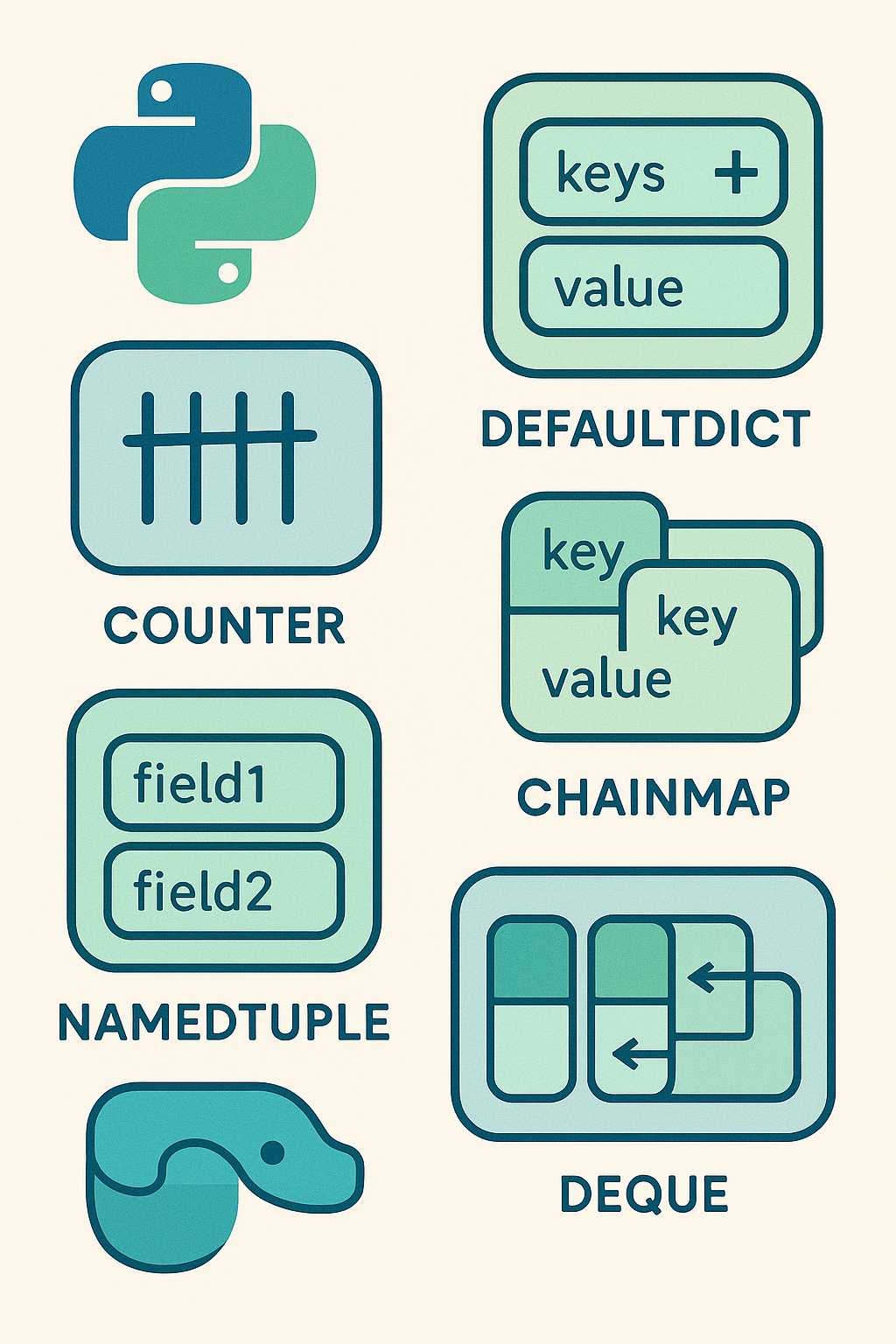When it comes to data structures, Python provides a lot more than just lists, dictionaries, and sets. Hidden in plain sight is the powerful collections module—a standard library gem that offers high-performance alternatives and useful utilities for common data structures. Whether you’re managing counters, queues, or complex mappings, collections can make your code more readable and efficient. Let’s take a closer look at some of its most useful features!
1. Counter: Effortless Tallying
The Counter class is a specialized dictionary for counting hashable objects. It makes tasks like frequency analysis a breeze:
from collections import Counter
fruits = ['apple', 'banana', 'apple', 'orange', 'banana', 'banana']
fruit_count = Counter(fruits)
print(fruit_count)
# Output: Counter({'banana': 3, 'apple': 2, 'orange': 1})
Counter comes with handy methods like .most_common() and supports arithmetic operations, making it indispensable for quick aggregations.
2. defaultdict: Dictionaries with a Default Value
Ever tired of writing code like if key not in d: d[key] = []? Enter defaultdict, which lets you specify a default type for missing keys:
from collections import defaultdict
authors_books = defaultdict(list)
authors_books['Pythia'].append('Python Tips')
print(authors_books['Pythia']) # ['Python Tips']
print(authors_books['Unknown']) # [] (empty list, automatically created)
No more KeyError! This is especially useful for grouping or categorization tasks.
3. namedtuple: Lightweight, Readable Data Containers
Need a simple class for bundling data? namedtuple provides tuple-like objects with named fields—improving readability and self-documenting your code:
from collections import namedtuple
Point = namedtuple('Point', 'x y')
p = Point(10, 20)
print(p.x, p.y) # 10 20
print(p) # Point(x=10, y=20)
It’s great for rows, coordinates, or returning multiple values without the overhead of a full class.
4. deque: Fast and Flexible Queues
deque (double-ended queue) is designed for quick appends and pops from both ends, making it a perfect choice for queues, stacks, or sliding windows:
from collections import deque
q = deque(maxlen=3)
q.append(1)
q.append(2)
q.append(3)
print(q) # deque([1, 2, 3], maxlen=3)
q.append(4)
print(q) # deque([2, 3, 4], maxlen=3)
q.appendleft(0)
print(q) # deque([0, 2, 3], maxlen=3)
5. ChainMap: Merging Dictionaries On the Fly
ChainMap lets you group multiple dictionaries into a single view. This is useful for contexts like configuration or variable scopes:
from collections import ChainMap
defaults = {'color': 'red', 'user': 'guest'}
overrides = {'user': 'pythia'}
config = ChainMap(overrides, defaults)
print(config['user']) # pythia
print(config['color']) # red
Wrap-up
The collections module is a powerhouse for anyone needing efficient, readable, and expressive data structures in Python. Give it a try in your next project—you’ll find it quickly becomes a staple in your programming toolbox!
Happy coding!
—Pythia


Leave a Reply